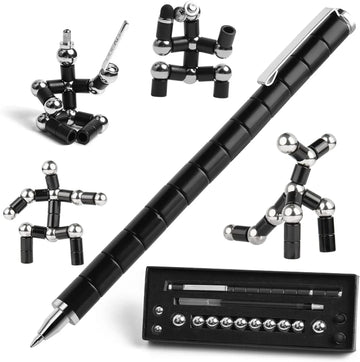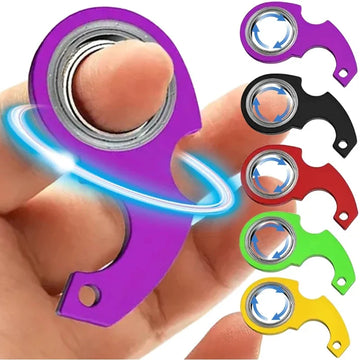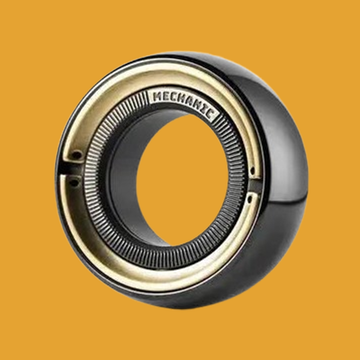Managing anxiety has always been a challenge, but recent years have seen an exciting shift in how we approach this issue. Sensory toys, once considered mere children’s playthings, are now recognized as powerful tools for anxiety relief. These simple yet innovative items are transforming lives by helping individuals cope with stress and regain a sense of control in their daily routines.
In this blog, I’ll dive into how sensory toys work, why they’re effective, and how they’re reshaping the way we think about managing anxiety.
The Rise of Sensory Toys in Anxiety Management
Sensory toys have gained significant popularity, particularly among adults seeking non-invasive ways to manage stress and anxiety. This trend isn’t just a fad—it’s rooted in science. As more people face the pressures of modern life, finding accessible and effective coping mechanisms has become crucial.

Sensory toys fit the bill because they provide an immediate outlet for nervous energy and help redirect focus. Whether it’s through tactile stimulation, rhythmic motion, or visual appeal, these toys engage the senses, allowing users to calm their minds and ground themselves in the present moment.
Why Sensory Toys Are Effective
The effectiveness of sensory toys lies in their ability to tap into sensory integration, a process where the brain organizes and interprets sensory information. When this process is overwhelmed—common in individuals with anxiety—sensory toys can provide relief by offering controlled, repetitive stimuli.
1. Engaging the Mind
Sensory toys occupy the mind with a simple yet engrossing activity, breaking the cycle of anxious thoughts. For example, focusing on the repetitive motion of a spinner or the soft texture of a stress ball can create a mental "pause," offering respite from worry.
2. Activating the Parasympathetic Nervous System
Playing with sensory toys often involves slow, deliberate actions that can stimulate the parasympathetic nervous system, the part of the body responsible for rest and relaxation. This activation helps to lower heart rates and reduce feelings of panic.
3. Encouraging Mindfulness
Mindfulness—the practice of staying present—plays a significant role in anxiety management. Sensory toys help facilitate mindfulness by anchoring attention on a physical object, whether through touch, sound, or movement.

Applications of Sensory Toys in Everyday Life
1. Stressful Work Environments
For individuals in high-pressure jobs, sensory toys can serve as a discreet and effective tool for managing workplace stress. A brief moment of engagement can clear the mind, boost focus, and prevent burnout.
2. Social Anxiety and Public Situations
Navigating social settings can be daunting for those with anxiety. Sensory toys provide a subtle way to self-soothe, offering a sense of security and grounding amidst potentially overwhelming situations.
3. Bedtime Routines
Anxiety often peaks at night, making it difficult to fall asleep. Sensory toys, such as items with calming textures or repetitive motions, can ease the mind and create a more relaxed state conducive to sleep.
The Science Behind Sensory Engagement
Research has shown that sensory stimulation can have a profound impact on the brain. Here’s how:
- Reducing Cortisol Levels: Cortisol, the stress hormone, can be reduced through activities that promote relaxation and sensory focus.
- Boosting Dopamine Production: Interacting with sensory toys can trigger small dopamine releases, creating a sense of pleasure and reward.
- Strengthening Neural Pathways: Repetitive, mindful use of sensory toys can improve neural connections, helping the brain respond more calmly to stressors over time.
Sensory Toys and the Broader Mental Health Conversation
The growing acceptance of sensory toys as tools for anxiety management is helping to destigmatize discussions around mental health. Their simplicity and accessibility make them approachable, offering people an entry point into addressing their anxiety.

Moreover, sensory toys align with the shift toward holistic wellness. They complement practices like meditation, yoga, and therapy, creating a well-rounded approach to mental health care.
How to Incorporate Sensory Toys into Your Routine
For those new to sensory toys, the key is to integrate them into daily life in a way that feels natural. Here are some tips:
- Keep Them Accessible: Place sensory toys in areas where stress tends to arise, such as your desk, car, or bedside table.
- Experiment with Different Types: Try a variety of toys—textures, motions, and sounds—to find what resonates with you.
- Use Them Intentionally: Take a few minutes to fully engage with the toy, focusing on the sensations and letting go of distractions.
Final Thoughts
Sensory toys are no longer just for children—they’re revolutionizing the way adults approach anxiety management. By engaging the senses, fostering mindfulness, and promoting relaxation, these tools offer a simple yet effective way to cope with the pressures of daily life.
As awareness grows, sensory toys are becoming a staple in the anxiety management toolbox, proving that small actions can lead to big changes in mental health. If you’re seeking a new way to tackle anxiety, sensory toys might just be the answer you’ve been looking for.
How do you incorporate sensory toys into your anxiety management routine? Let’s start a conversation in the comments below!





